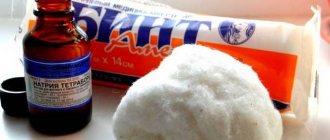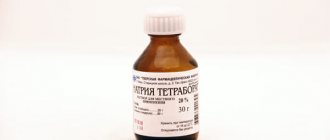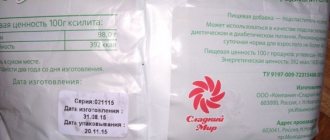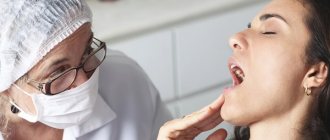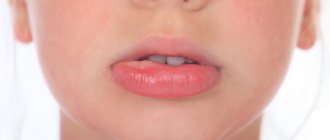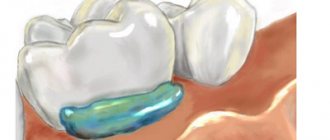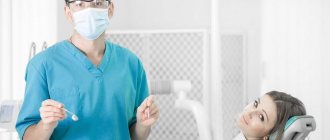Compound
The contents of the product depend on the manufacturer, price and type. In addition to water, the main components of pastes include abrasive substances. They have an important function - cleaning and polishing teeth.
There are also specialized pastes, which come in the following types.
- Anti-caries. Such products consist of fluorides, xylitol, calcium glycerophosphate, sodium phosphorus bicarbonate.
- For sensitive teeth. They are saturated with potassium chloride and nitrate, silicon oxide, strontium chloride.
- Anti-inflammatory. These pastes are enriched with aluminum lactate, herbal extracts, hexetidine, chlorhexidine, triclosan.
- Whitening. They are created with silicon hydroxide, sodium and potassium pyrophosphates.
- Sorptive. The active ingredient is enterosgel.
Many pastes consist of substances that impart viscosity, dyes and flavors. The latter are divided into natural (esters, menthol, limonin) and artificial. There is a foaming toothpaste. In addition to the standard composition, it contains additional components. This is a surfactant - a surfactant. It should not be more than 2% in one product. This is why sodium laureth and sodium lauryl sulfate are added. Toothpaste contains binding components that ensure homogeneity - pectin, glycerin, dextran, cellulose.
What does it contain?
Coconut oil-based detergents and bath gels, shampoos and cleansers contain sodium coco sulfate, which is very harmful to health. Advertising tries not to mention its presence, since it is considered a highly corrosive agent and carcinogen.
The first high-profile scandal concerning the dangers of sodium lauryl sulfate erupted in the USA and Europe in the nineties of the twentieth century.
Perfume and cosmetics companies found themselves under the radar of toxicologists, doctors, and environmentalists. The cosmetics they produced contained chemicals, which were hazardous to health.
Their nature aroused strong suspicion among medical professionals. Most of all they took up arms against those of them that lacked taste and color. Sodium lauryl sulfate (SLS) is present in cleaning products such as:
- toothpaste (you can find out why SLS is added to toothpaste, and also see a list of oral hygiene products without lauryl sulfate here);
- liquid soap;
- shampoo (read about what Sodium Laureth Sulfate is in shampoo here);
- shaving foam;
- shower gel.
Specialists from the State Medical College. Georgia in the USA insists that it most harms children's eyes, acting irritatingly on the mucous membrane. It can destroy a person's immune system by entering and accumulating in the heart, liver, brain and lungs through the skin.
In addition, SLS interacts with other cosmetic ingredients . During the chemical reaction, nitrates and carcinogens are formed, which enter the blood.
There is a lot of varied data on the negative effects of sodium lauryl sulfate on the body. Some sources claim its relative harmlessness and even usefulness. Read about the pros and cons of using SLS in cosmetics and medicines in our materials.
Sodium lauryl sulfate - what is it?
In the composition it is designated as Sodium lauryl sulfate. These are anionic surfactants that dissolve fats, clean, form foam and wet. Why is sodium lauryl sulfate in toothpaste? The component has the ability to oxidize, due to which a film forms on the skin and mucous membranes. From its influence the following is observed:
- rash;
- redness;
- irritation;
- peeling;
- allergy.
Sodium lauryl sulfate also disrupts the water-fat balance of the skin and stimulates sebum production. The component penetrates through the skin into the internal organs, accumulating in them. Kidneys, heart, liver, brain, eyes suffer. The chemical acts on the protein tissue of the visual organs, leading to cataracts. The substance has not been proven to be carcinogenic, but it is known that after reacting with other substances it causes cancer. In men, SLS causes decreased fertility.
Sodium lauryl sulfate, aka Sodium Laureth Sulfate, aka SLS: studying the composition
Sodium lauryl sulfate, as a very cheap surfactant, is included in most cleansing formulas, including toothpastes and shampoos, as it provides effective foaming. Some studies indicate the irritating effect of SLS on the eye area and skin, especially sensitive, young and prone to inflammatory elements. It can seriously worsen skin problems in patients with atopic dermatitis. The irritant effect of SLS is directly proportional to its concentration in the composition. Therefore, responsible manufacturers introduce it into the composition in a minimum concentration (up to 3%) and only in wash-off products.
It is important to understand that SLS can be produced in completely different ways and from different raw materials: using a large percentage of chemicals, reacting with aggressive acids, or it can be obtained in a gentle way from plant materials. And this greatly affects the quality of the final product. The main method of synthesis is the sulfation of lauryl alcohol. So lauryl alcohol itself can be produced either from petroleum or from coconut or palm oil. But natural vegetable oil is modified so many times during the production process that SLS becomes a very distant synthetic “relative”.
Contrary to the terrifying comments, Sodium Lauryl Sulfate is a substance approved for use by the ECOCERT organic standard, provided that it is obtained using gentle methods from plant materials and the final product is completely biodegradable. And the origin of the substance must be clearly indicated - from natural oil, and this is indicated in the INCI document (International Nomenclature of Cosmetic Ingredients).
Sodium Laureth Sulfate (aka Sodium Laureth Sulfate, also known as SLES) is an ingredient similar in properties to SLS (an ester chain is added). Even cheaper than SLS and, when salt is added, it creates a lot of foam and creates the illusion of a thick, concentrated and expensive product. Scientists have found traces of dioxin (1,4-dioxane) in some SLES products, suggesting it reacts with other components. The US Environmental Protection Agency recognizes 1,4-dioxane as potentially carcinogenic. SLES is not approved for use by the ECOCERT standard.
Thus, the main advice when using products with sodium lauryl sulfate (SLS) is: do not use products with SLS that are designed for prolonged skin contact. But it should also be remembered that people suffering from acne, dermatitis, dry skin and hair loss should refrain from using products containing this component.
Bionics completely abandons SLES and SLS of petrochemical origin, and chooses products that contain other, more gentle surfactants. Organic cosmetics use alternative ingredients that are safer for the body:
- Cocamidopropyl betaine (made from fatty acids in coconut oil and a substance found in beets)
- Cocoyl monosodium glutamate (made from an amino acid)
- Sodium lauryl sulfoacetate (made from coconut and palm oil)
- Coconut glucosides (made from dried coconut meat and fruit sugar)
- Glyceryl Oleate/Citrate/Lactate/Linoleate (made from palm fruit, coconut and sunflower seeds)
- Lauryl glucoside (made from sugar and coconut oil)
- Sodium Lauryl Sarcosinate (derived from a naturally occurring amino acid found in fruits and vegetables) published
Sodium laureth sulfate
In addition to sodium lauryl sulfate, toothpaste contains another aggressive substance - sodium laureth sulfate (SLES). The component is especially valued by manufacturers because it is cheap, provides foam and the illusion of cost savings. The substance irritates the oral mucosa and skin, especially if you are prone to allergies.
Like SLS, it interacts with other components of skin care products to create dioxins and nitrates, and increases the risk of cancer. Laureth sulfate, as well as its analogue, can suppress the immune system and destroy skin proteins. SLES has a less aggressive and irritating effect on the skin. Its side effects are lower compared to lauryl sulfate.
What is sodium lauryl sulfate?
90% of popular products on the market contain SLS.
Sodium lauryl sulfate is an emulsifier, surfactant (surfactant). By reducing the surface tension of aqueous solutions, the component promotes the formation of an emulsion - a mixture of immiscible liquids. The presence of SLS in the compound prevents the mass from re-stratifying into its components. When SLS is mixed with water, a stable, long-lasting foam is obtained.
Sodium lauryl sulfate in its pure form has the appearance of a viscous white liquid (may have a yellowish tint) and is transparent. The substance is synthetic, it is synthesized from ethylene.
Important: some manufacturers of hygiene products that use Sodium Lauryl Sulfate in the production of their products position the substance as natural, obtained from coconuts. Indeed, SLS is present in natural palm oil, but on an industrial scale it is obtained chemically.
Where is Sodium Lauryl Sulfate used?
Sodium Lauryl Sulfate is not a dietary supplement. The substance is used in the production of cosmetics and hygiene products. This is explained by the fact that the substance has a high cleaning ability and bactericidal properties. SLS is active against some pathogens, including staphylococci, E. coli, salmonella, and fungi. Due to this, it is actively used in the production of shampoos, shower gels, dishwashing detergents, liquid washing powders, car shampoos and other household chemicals. In addition, many manufacturers add sodium lauryl sulfate to toothpastes.
Read: what it is and what the cost is.
Functions
Why are SLES and SLS in pastes? These components are anionic surfactants. Their molecules are fixed at one end to a particle of water, and at the other to fat. Therefore, sodium sulfates have an excellent degreasing and cleaning effect. They have no taste or color; they dissolve perfectly in water. With the help of magnesium and calcium salts, poorly soluble substances are created that form plaque.
Lauryl sulfate is made from lauryl acids using sodium and sulfuric acid. In addition to natural raw materials, synthetic ones from petroleum products are often used. SLES is created by modifying SLS. Components are added for foaming. It is with their help that a small amount of paste provides a mouth full of foam.
When brushing your teeth, substances enter the blood vessels of the mouth and are carried throughout the body. This is due to the high absorption capacity of oral tissues. Why is sodium lauryl sulfate harmful? Because of this component:
- enamel becomes thinner;
- gum sensitivity increases;
- the oral mucosa dries out;
- stomatitis appears.
The components penetrate into the gastrointestinal tract when swallowed and lead to diseases. Even if the mouth is rinsed thoroughly, some of the product ends up in the stomach. This also happens during oral hygiene.
What is the difference between SLS and SLES sulfates?
Sodium lauryl sulfate (SLS) is a white powder containing 100% active ingredient. Sodium laureth sulfate (SLES) is traditionally a 70% paste. But the concentration may be less, about 30%, it all depends on the specific brand of sodium laureth sulfate.
It is easy to check the effect of sulfates on the skin. And this has been done repeatedly by large corporations (for example, BASF) and independent expert organizations (The Cosmetic Ingredient Review). But the difficulty with all patch tests is that sulfates are tested in large volumes and remain on the skin for a long time, resulting in irritation. For example, to evaluate the effect of SLES, the sulfate was left on the skin for up to 48 hours, and its concentration in an aqueous solution reached 30% - something you will not find in cosmetics.
In addition, the aggressiveness of the effects of surfactants on the skin (SLES and SLS) decreases significantly when they are combined with soft co-surfactants, which is how technologists create their formulations.
In the joint formula, the drying effect of SLES is always minimized, leaving only an indicator of foam that is convenient for the client.
If we compare these two components, then SLS will be more aggressive, but, in fairness, I note that sodium lauryl sulfate is not often introduced into cosmetics - it is replaced with SLES.
Where else are they used?
Previously, the components were used in industrial cleaning products for machines and various surfaces. In the medical field, substances began to be used as skin irritants for experiments. Scientists tested the effectiveness of drugs to eliminate irritations.
Sulfates are most common in the production of household chemicals, decorative and caring cosmetics. About 90% of shampoos include sodium lauryl and laureth sulfates. There are also other components in shower and wash gels. They are added to shaving products, dishwashing products, makeup remover and personal hygiene products, washing powders and liquid soap. Sulfates in creams and products that are not washed off the skin are especially harmful.
Parabens
Parabens are found in almost every dental care product. They are preservatives that extend the shelf life of the product. On packaging, substances may be indicated as:
- methylparabens;
- propylparabens;
- butylparabens;
- ethylparabens.
They are added to cosmetic products no more than 0.4% by weight of the product. Scientists believe that parabens affect the incidence of breast and reproductive organ cancer. This is due to the fact that the accumulation of components in the body leads to an excess of estrogen and changes in the hormonal system. Preservatives also cause allergies; they corrode the skin. They affect the DNA structure and quickly lead to aging.
Disguise
How are dangerous substances disguised? Manufacturers often distort the names of harmful components and replace them with others. Lauryl sulfate, which is obtained by refining petroleum, is often disguised as an analogue that is extracted from coconuts or coconut oil.
The label “Paraben Free” on packaging is not always true. Manufacturers often deceive customers by labeling them as methyl paraoxybenzoate. But the essence still remains the same: the components are parabens.
Lauryl sulfate in toothpaste
The most dangerous combination of active substances is ammonium lauryl sulfate and nanoparticles. Such substances can be found in many toothpastes from different manufacturers.
Experts were able to prove the negative impact of such components on the condition of the oral cavity; they can provoke genetic mutations, the development of cancer cells and their penetration into the bloodstream, which can occur with increased cell permeability.
Harmful substances
In addition to SLS and SLES, the paste also contains other harmful components.
- Triclosan. This is a synthetic antibiotic that is added to products to eliminate harmful bacteria. If you often use antibacterial agents, the microflora of the mouth suffers, since pathogenic microorganisms are also destroyed. Long-term use of products with triclosan leads to the progression of tonsillitis, periodontitis and other ailments.
- Chlorhexidine. This is an antiseptic component added to toothpastes to protect against plaque and inflammation of the oral cavity. The substance eliminates pathogenic and beneficial microflora of the mouth, and when it penetrates the digestive tract it has the same effect.
- Fluorine. The component is present in tooth care pastes, which protects the enamel from destruction by bacteria and acids. But oral hygiene with fluoride products leads to an overdose of the component. This is due to the fact that fluoride enters the body from other sources: tap water, food, tea. The component is found in buckwheat, rice, oats, apples, citrus fruits, walnuts, fish, seafood, and potatoes. The daily fluoride intake for adults is 2 mg, for children over 4 years old - 2 times less. Exceeding the norm leads to urolithiasis, destruction of bone and joint tissue, impaired memory and thinking, and thyroid diseases.
- Formaldehyde. This is a toxic component that is found in almost every germ elimination product. Its penetration into the body negatively affects vision, skin, liver, kidneys, lungs, and DNA.
- Aluminum lactate. The component is added to eliminate inflammation and in products for sensitive teeth. It relieves bleeding. Aluminum salts are harmful to brain cells. Symptoms include decreased mental abilities, memory, loss of coordination, and dementia. Due to the accumulation of aluminum, calcium and phosphorus are not absorbed, which negatively affects the musculoskeletal system.
- Propylene glycol. The component is able to inhibit the growth of bacteria in the paste. It affects the immune and respiratory systems, leading to dermatitis, allergies, and dry mucous membranes.
Benefits and harms
Sodium lauryl sulfate is an effective and inexpensive detergent with increased foaming. It is safe for the environment, as it has a high biodegradability rate (more than 90%). This is where the advantages of the product end.
The substance can cause irreparable harm to human health. The product is poorly excreted from the body.
The high degreasing qualities of the E 487 additive acquire a negative connotation when it comes to cosmetic products for skin and hair care.
In shampoos, soaps, shaving foam and similar products, sodium lauryl sulfate can cause:
- dryness, cracking and flaking of the skin;
- the appearance of dandruff;
- hair loss;
- itching, skin rashes (the additive is one of the strongest allergens!);
- pain, inflammation of the mucous membrane upon contact with the eyes (especially dangerous for children).
Sodium lauryl sulfate in toothpastes is especially dangerous . The additive has a dehydrating effect. Once in the oral cavity, it irritates the mucous membrane and causes the formation of ulcers (stomatitis).
A number of studies have revealed the ability of the substance to penetrate through the mucous membrane and skin into the cells of the body and accumulate there. This can provoke a malfunction of the immune system, causing various damage to the liver, heart, respiratory system, and brain.
The additive causes significant harm with prolonged use. Short-term exposure to the skin (for example, when cleansing the face, washing dishes) will have a serious negative effect only if you are individually intolerant.
Tests for carcinogenic and mutogenic properties were carried out superficially, once. They did not identify any dangerous qualities of the additive.
Choosing a Safe Paste
When purchasing hygiene products, you need to consider the order of the components in the product. The higher the concentration of a substance, the closer to the beginning of the list it is indicated. It is necessary that all ingredients are recorded both on the packaging and on the tube. If this rule is not followed, the manufacturer is probably hiding something.
If you have any doubts about what to choose: a product with or without fluoride, you need to adjust your diet and determine the daily intake of the component. You also need to take into account the fluoridation of tap water and its level of filtration. There are cities where the water is saturated with fluoride in large quantities. In this case, it is better not to choose fluoride-containing pastes. The percentage of fluorine in the product is indicated under the abbreviation ppm and should not be more than 1500 ppm - 0.015% of the total mass. If this mark is missing, it is advisable not to buy the product.
A very long shelf life should be a concern, as this is a sign of excess preservatives. You should also take into account the color of the strip on the tube, which determines its danger.
- Black. The strip means that components have been added that aggravate periodontal disease.
- Red. In this case, fluoride, sulfates or antibiotics are present.
- Blue. The paste contains synthetic components.
- Green. The product is considered completely natural.
Need for cleaning
The oral cavity is considered one of the most exposed areas of the body to the environment. There are a lot of bacteria there. Teeth are designed for mechanical processing of food, that is, chewing foods whose remains get stuck between the teeth. This provides a favorable environment for microorganisms. When a person has not brushed his teeth for a long time, bacteria multiply rapidly and a soft plaque appears.
This plaque negatively affects teeth because it releases acid, which destroys tooth enamel. If you do not clean it off, caries gradually appears. Plaque also leads to the disruption of the natural barrier to infections in the mouth. It also leads to halitosis – bad breath and the formation of tartar. By regularly cleaning teeth from soft plaque, microorganisms will not have a chance to cause caries and other problems.
What's the harm?
Fluorine is part of more complex elements called fluorides, which are found in soil, water and vegetation.
Fluorides are considered toxic elements, thanks to this property they successfully defeat bacteria and harmful microorganisms in the oral cavity.
Fluoride resists the development of caries, but at the same time it has an aggressive effect on the dental shell itself, slowly killing beneficial bacteria in the mouth.
Fluoride has the following negative effects:
- in large quantities it is toxic to the body;
- increases the risk of bone tissue diseases and fluorosis;
- limits the normal absorption of iodine;
- accumulates in the thyroid gland;
- adversely affects the cardiovascular and nervous systems.
Excess fluoride and frequent use of “wrong” pastes lead to the accumulation of this element in the body. To avoid this, dentists recommend using such pastes once a week, and residents of some regions of Russia, where fluoride levels in water exceed the norm, completely abandon them.
An increased fluoride content in drinking water, that is, an indicator equal to 1.1 mg/l and higher, is observed in the following regions of Russia:
- Western part of Siberia;
- Mordovia;
- Ural region;
- Tambov;
- Nizhny Novgorod Region;
- Leningrad region;
- Tver and Moscow regions.
The following video will supplement the information about the dangers of fluoride on the human body:
Where is sodium lauryl sulfate not available?
Now toothpastes without SLS and SLES are still produced. Foaming in them is carried out by a practically harmless component sodium lauryl sarcosinate. Often, sulfate-free packaging is labeled “SLS-free.” You should familiarize yourself with the list of toothpastes without sodium lauryl sulfate:
- President Classic.
- ROCS - standard, Bionica, Energy, coffee and tobacco, children's.
- Silca Multicomplex.
- Toothpaste from Natura Siberica - “Arctic protection”.
- Biomed Superwhite.
- Splat.
- Grandmother Agafya's recipes.
- "New pearls with calcium."
- Jason Natural Power smile.
What is SLS
The main role of sodium lauryl sulfate (SLS) is excellent foaming for the relatively low cost of the component. For example: toothpaste with SLS will foam beautifully, which means it will clean the enamel and fight plaque. Toothpaste without SLS (it is replaced by sodium lauryl sarcosinate) does not foam so well, which means it does not clean the enamel as well: it looks like you have brushed your teeth, but there is no feeling of cleanliness.
Do not forget that SLS is the main working component of most household chemicals. They foam and remove dirt thanks to sodium lauryl sulfate.
Where there is?
Toothpastes containing sodium lauryl sulfate include:
- ROCS – with chocolate and berry flavors.
- Blend-a-med.
- Colgate.
- "New pearls".
- "Forest Balsam"
- Aquafresh.
- Marvis.
Crest 3d white paste contains sodium lauryl sulfate. It is advisable not to constantly use products containing this component. There are effective products without this substance. Crest 3d white also contains polyphosphates, which loosen tartar, wash it out, and also remove the enamel itself. The product is abrasive.
How to brush your teeth?
Brushing your teeth should be done at least 2 times a day - in the morning after meals and in the evening. Dentists advise doing this for at least 3 minutes. In addition to cleaning the tooth, you need to pay attention to the interdental spaces, since food debris gets stuck in them, on which plaque quickly grows. They can be cleaned with dental floss.
Finish brushing your teeth with rinses, preferably herbal ones. It is important that this product does not contain alcohol and chlorhexidine. The duration of contact of the rinse with the oral cavity is 30 seconds. You should also brush your teeth after eating. To do this, use chewing gum, which cleanses the oral cavity in 5-7 minutes.
Sometimes, if you have problem teeth, chewing gum is harmful, so you should use mouthwash after meals. You should consult your dentist about how to properly brush your teeth. Twice a year you should have your teeth professionally cleaned by a dentist. A specialist will clean what cannot be cleaned at home - tartar, plaque.
Toothpaste is an important oral care product. But it is important to read the ingredients so that the selected products include only safe ingredients. Then the toothpaste you use will be completely healthy.
